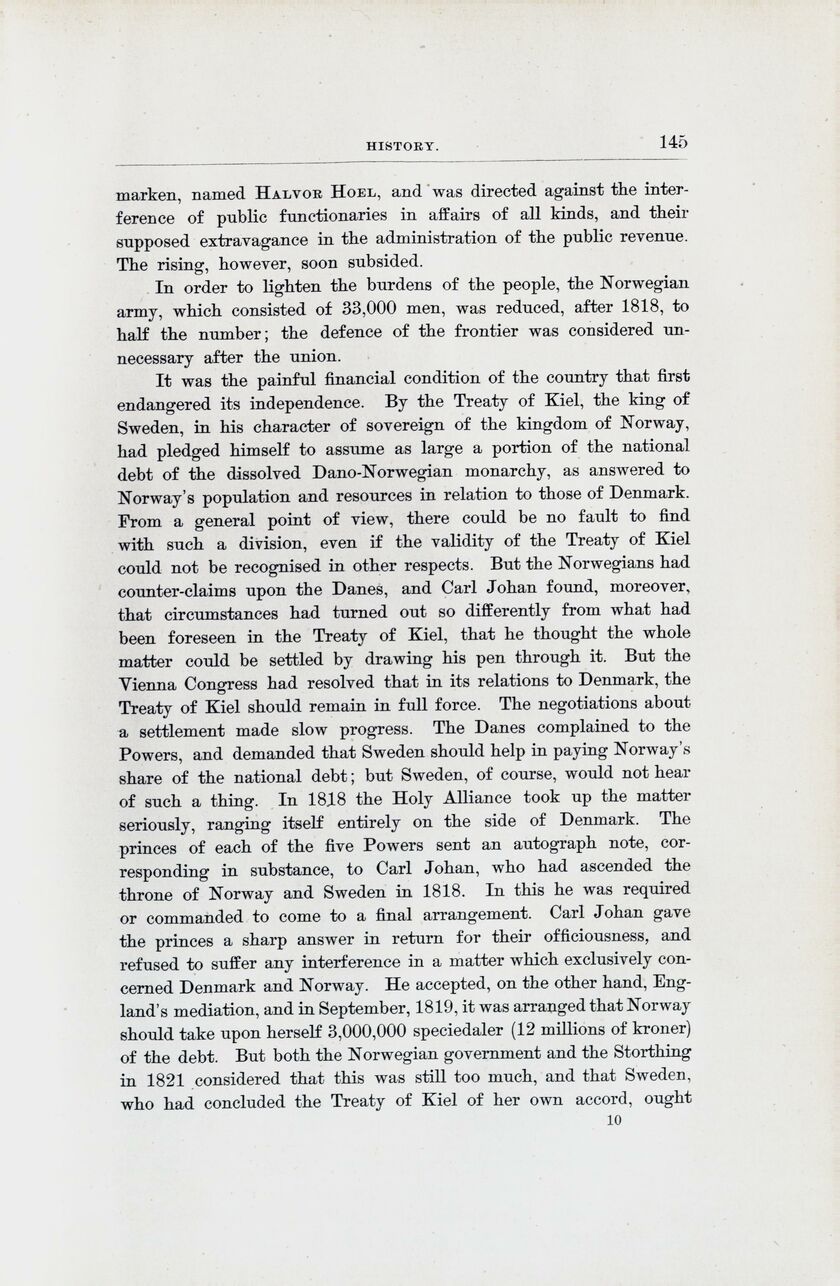
Full resolution (JPEG) - On this page / på denna sida - History, by O. A. Œverland

<< prev. page << föreg. sida << >> nästa sida >> next page >>
Below is the raw OCR text
from the above scanned image.
Do you see an error? Proofread the page now!
Här nedan syns maskintolkade texten från faksimilbilden ovan.
Ser du något fel? Korrekturläs sidan nu!
This page has been proofread at least once.
(diff)
(history)
Denna sida har korrekturlästs minst en gång.
(skillnad)
(historik)
Hedemarken, named Halvor Hoel, and was directed against the
interference of public functionaries in affairs of all kinds, and their
supposed extravagance in the administration of the public revenue.
The rising, however, soon subsided.
In order to lighten the burdens of the people, the Norwegian
army, which consisted of 33,000 men, was reduced, after 1818, to
half the number; the defence of the frontier was considered
unnecessary after the union.
It was the painful financial condition of the country that first
endangered its independence. By the Treaty of Kiel, the king of
Sweden, in his character of sovereign of the kingdom of Norway,
had pledged himself to assume as large a portion of the national
debt of the dissolved Dano-Norwegian monarchy, as answered to
Norway’s population and resources in relation to those of Denmark.
From a general point of view, there could be no fault to find
with such a division, even if the validity of the Treaty of Kiel
could not be recognised in other respects. But the Norwegians had
counter-claims upon the Danes, and Carl Johan found, moreover,
that circumstances had turned out so differently from what had
been foreseen in the Treaty of Kiel, that he thought the whole
matter could be settled by drawing his pen through it. But the
Vienna Congress had resolved that in its relations to Denmark, the
Treaty of Kiel should remain in full force. The negotiations about
a settlement made slow progress. The Danes complained to the
Powers, and demanded that Sweden should help in paying Norway’s
share of the national debt; but Sweden, of course, would not hear
of such a thing. In 1818 the Holy Alliance took up the matter
seriously, ranging itself entirely on the side of Denmark. The
princes of each of the five Powers sent an autograph note,
corresponding in substance, to Carl Johan, who had ascended the
throne of Norway and Sweden in 1818. In this he was required
or commanded to come to a final arrangement. Carl Johan gave
the princes a sharp answer in return for their officiousness, and
refused to suffer any interference in a matter which exclusively
concerned Denmark and Norway. He accepted, on the other hand,
England’s mediation, and in September, 1819, it was arranged that Norway
should take upon herself 3,000,000 speciedaler (12 millions of kroner)
of the debt. But both the Norwegian government and the Storthing
in 1821 considered that this was still too much, and that Sweden,
who had concluded the Treaty of Kiel of her own accord, ought
<< prev. page << föreg. sida << >> nästa sida >> next page >>